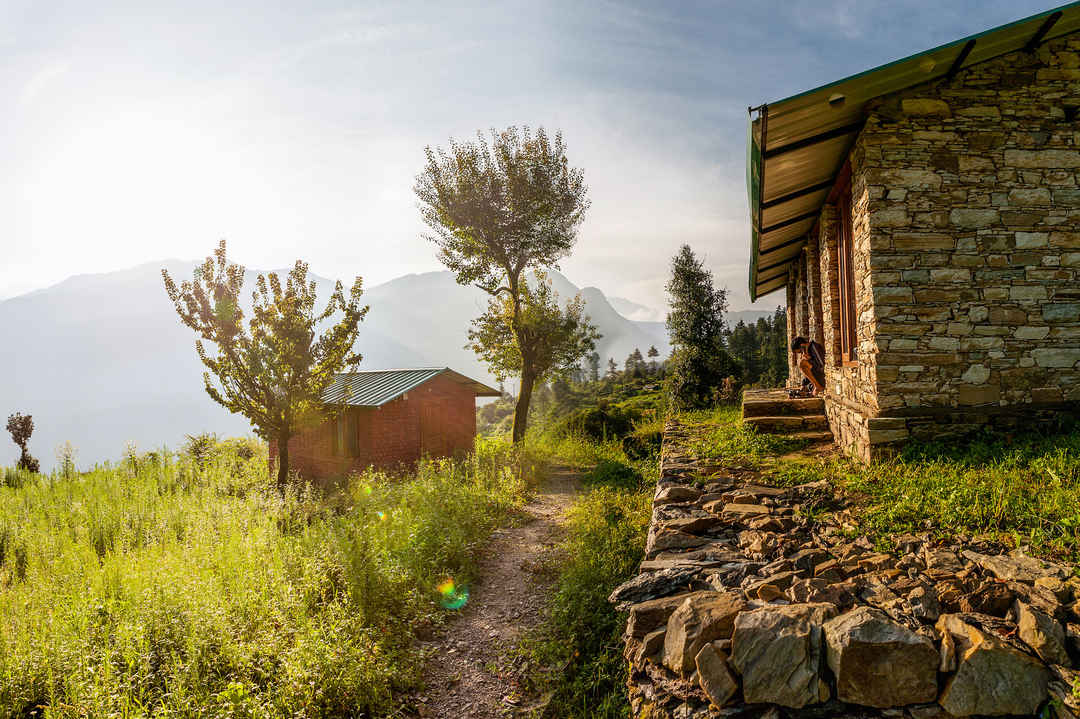The Forgotten Village of Rain: An Untold Story from Uttarakhand

When we think about Uttarakhand, we often imagine the snow-covered hills of Kedarnath, the spiritual peace of Rishikesh, or the famous Char Dham Yatra. But Uttarakhand is not just about temples and trekking spots. It holds many mysteries and forgotten places that are still hidden from the eyes of the world. One such place is a small village known as “The Village of Rain.”
This is not a name you’ll find on tourist maps or in popular travel blogs. It’s a real village in the Pithoragarh district, where people say it rains for more than 300 days in a year. Sounds unbelievable, right? But this place is real, and so is its unique story.
The Hidden Village: Dharchula’s Rainy Secret
Near the Indo-Nepal border lies Dharchula, a peaceful town known for trade and trekking. A few kilometers uphill from Dharchula lies a remote village that locals call “Barsaat Gaon” (Rain Village). Its actual name is Munsiyari, but certain parts of it-like the Milam Valley-are famous among locals for one reason: unusual rain patterns.
According to the people who live there, clouds cover the sky almost all year. Even in the so-called “dry season”, this village receives light drizzles or unexpected showers.
A Life Built Around Rain
In most places, too much rain creates problems. But the people of this village have adapted their lifestyle to constant moisture. Their homes are built with sloped roofs, and the walls are coated with a mixture of mud, hay, and pine bark to keep out the damp.
They grow crops that can survive in wet soil, like potatoes, rajma (kidney beans), and barley. But due to lack of sunlight and connectivity, modern farming hasn’t reached here. Electricity comes and goes. Mobile signal is rare. And yet, the people here live peacefully and happily.
The Science Behind It?
Locals believe the village is blessed (or cursed) by the “Rain Gods”. But some geologists and weather experts say that the village sits at a special elevation between the Himalayas and the monsoon clouds. These clouds get trapped in the valley, causing constant drizzle or rainfall.
Unlike places like Cherrapunji or Mawsynram in Meghalaya-known globally for high rainfall-this village has never been officially measured or recognized. That’s why its story remains untold to the outside world.
Why Has No One Heard About It?
There are a few reasons:
- No proper roads: The last 3–5 km must be covered by foot.
- No tourism promotion: No government campaign or travel agency covers this part.
- Lack of documentation: No proper rainfall records or weather data exists.
- Simple villagers: The residents don’t seek publicity. They live quietly and humbly.
A Cultural Mystery Too
The people here also have a unique way of life. Their dialect is a mix of Kumaoni and Nepali. They still follow ancient weather traditions, like predicting rain based on the wind and birds.
Every year, they hold a local festival called “Megha Mela”, where villagers sing and dance to thank the clouds. This festival is not famous outside the valley, but it’s a beautiful celebration of their deep connection with nature.
Will the Secret Remain?
As climate change affects global weather patterns, the village has started seeing changes too. Rains are becoming heavier and landslides more frequent. Young people are migrating to cities like Haldwani and Dehradun. Slowly, the unique charm of the Rain Village is fading.
But the elders believe that as long as the clouds stay, the village will remain alive. They welcome kind travelers who respect nature and silence.
Conclusion
Uttarakhand has many known gems, but the real heart of the state beats in such hidden villages. The “Village of Rain” is not just about weather-it’s about resilience, simplicity, and silent beauty. Maybe someday the world will discover it. But until then, it stays protected-by clouds, by silence, and by its own people.




